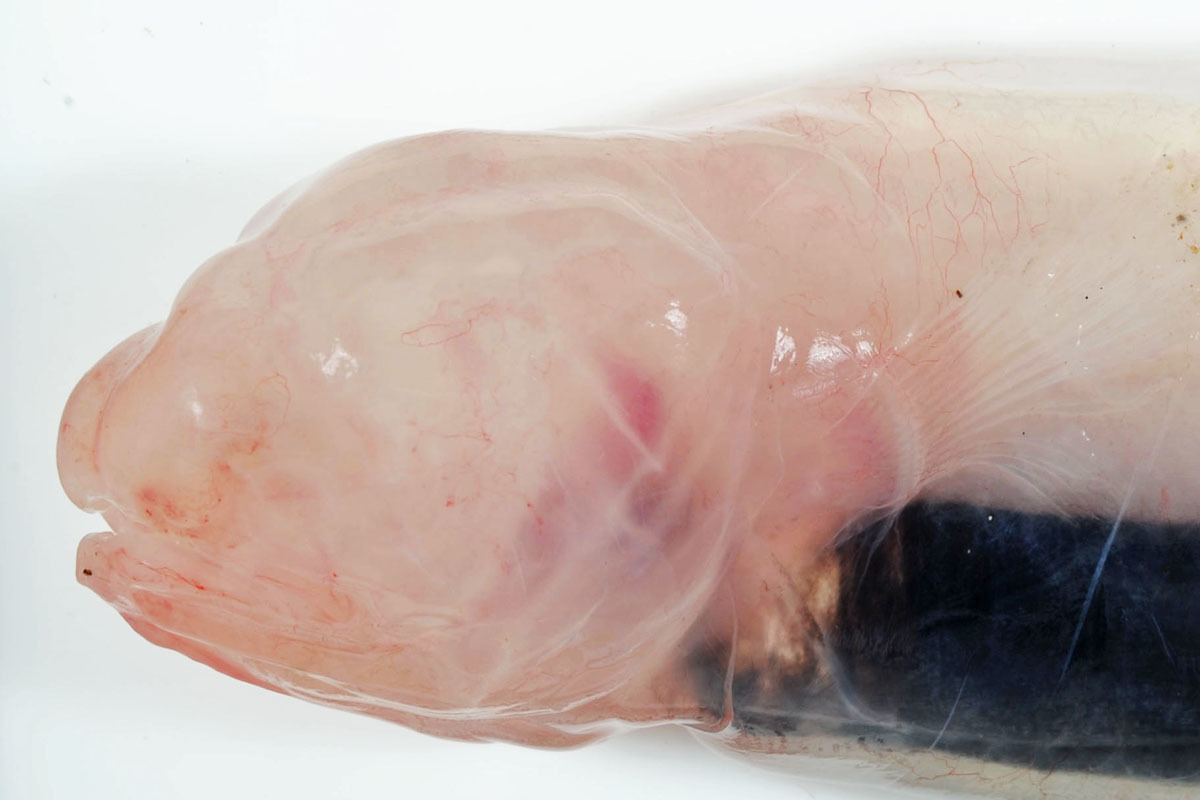June 16, 2017


 Day 33: Martin Gomon, Museums Victoria
Day 33: Martin Gomon, Museums Victoria
What features stand out when you look someone, or something, new in the face . . . eyes, nose, mouth? Not in the abyss! For this is the place of the featureless face, where perhaps the most vital innovations of vertebrate anatomy are all but useless, with none being more so than the most powerful of them all, the eyes.
Why hold onto eyes where a reason for them doesn’t exist? Why have eyes where colour, form and texture can’t be conveyed because there is no light to convey them? Bioluminescence you say? It is indeed present, but not in great enough concentrations to allow vision of form and texture. And colour? No, not so much, because all the living fish are dark, pale . . . or translucent.

A face without obvious eyes? Think the youngest, the just born, the pre-born whose eyes are still covered by skin, the nose little more than two pores at the front, the mouth hardly large enough to allow in water, much less food, a reasonable description of fishes in the abyss in general. Not just the one-off, but a story repeating itself again and again. In the video below, John Pogonoski talks about a classic example of a featureless fish: a gelatinous eel caught on the RV Investigator voyage.
The loss of functional eyes is a bit extreme you might say but the answer to that is in another question: “Why retain such expensive, energy eating organs, whose sophisticated cells would normally convey and interpret vital messages of sight about predators and prey, when the light’s not there?” No light, no sight, no messages. And why return to the form of the youngest?

Scientists might say these fishes have regressed to an ancestral stage, before evolution has imposed the cost of developing and maintaining an expense now no longer needed. Even the most elegant designs down here, like those acquired by the icons of this world, the tripod fishes on their tall spindly fins . . . but tiny, non-functional eyes . . . . have made their savings where they can.
And then, of course, there’s the odd one out of the group, the bottom-hugging Grideye Spiderfish with flat oval plates in the place of eyes, the reason for which still requires explanation. It certainly isn’t for sight in the way we think of it.


Read more about these fish
Tripod fishes find dinner with fins and rays, not eyes and teeth
The faceless fish looks happier and heartier than it did in 1887
- Log in to post comments
